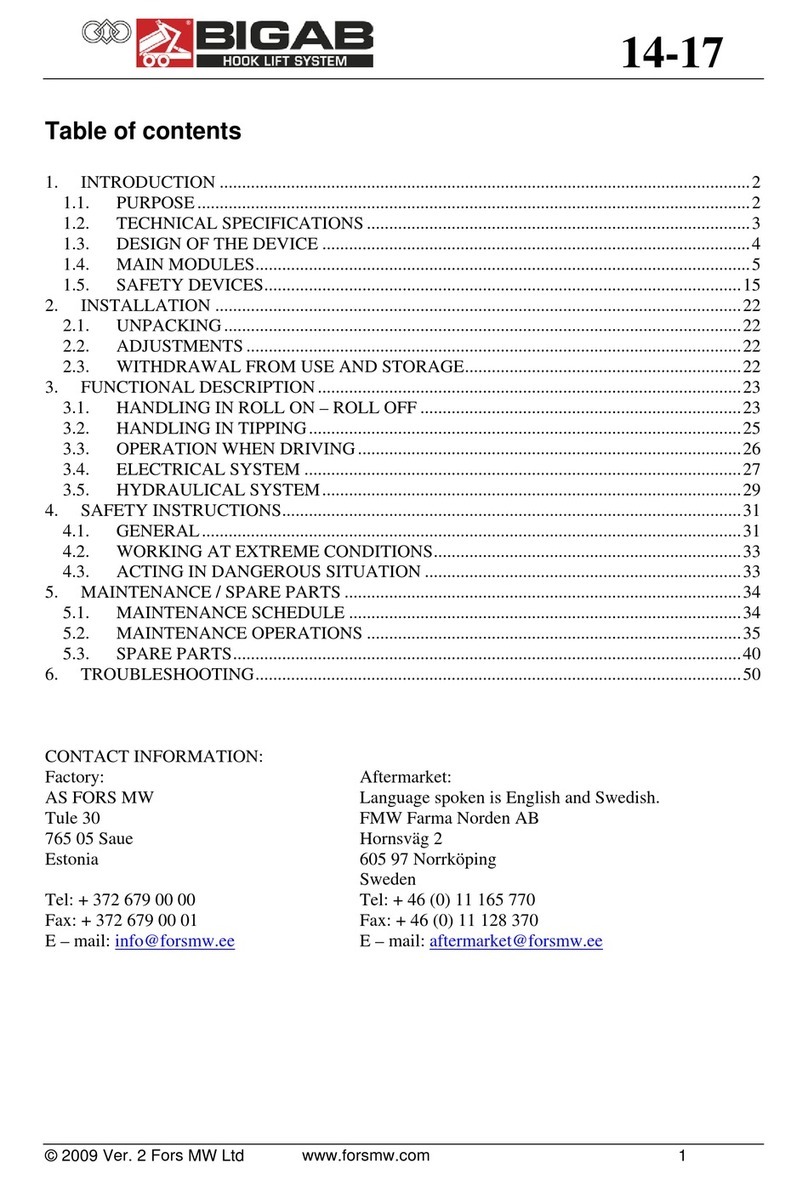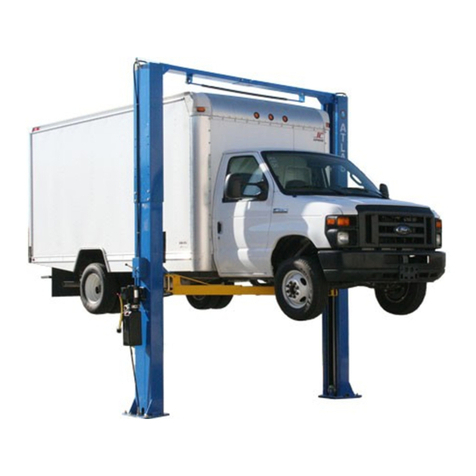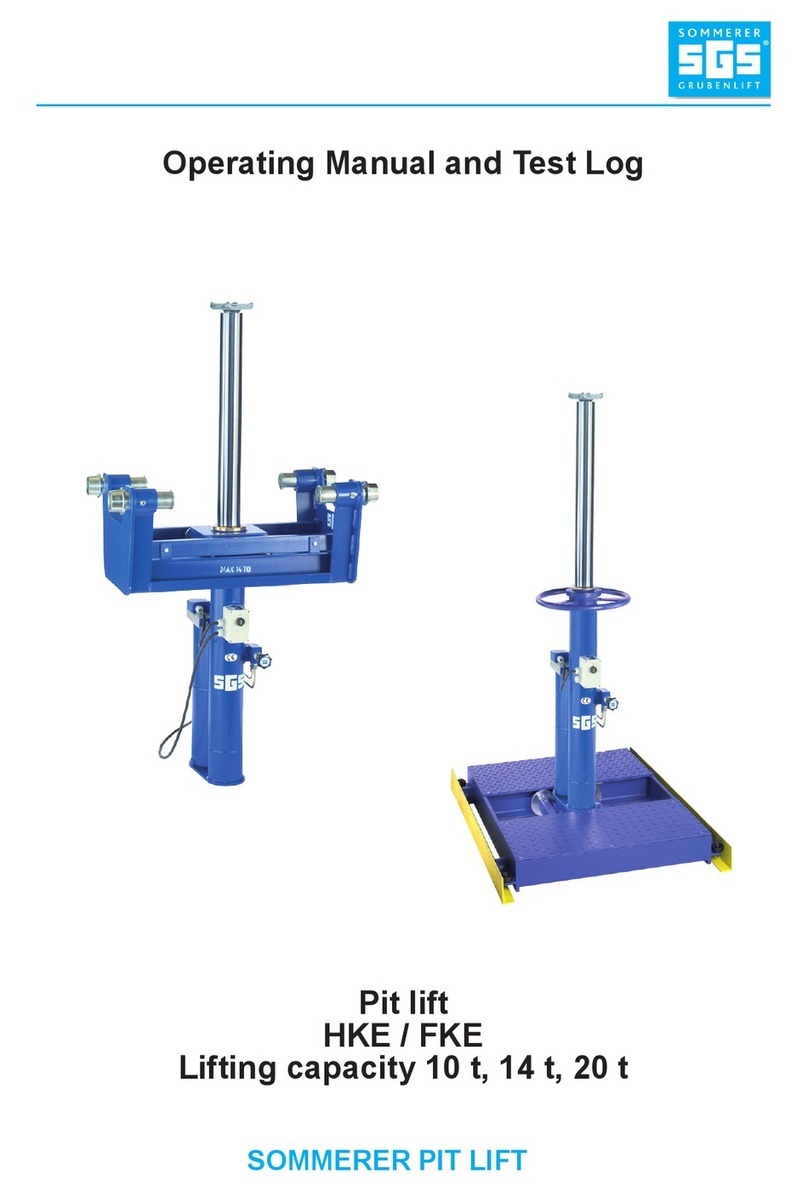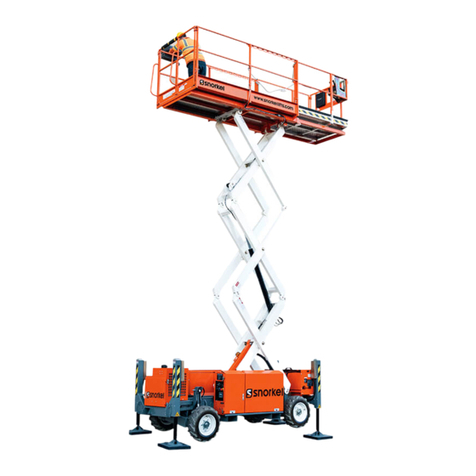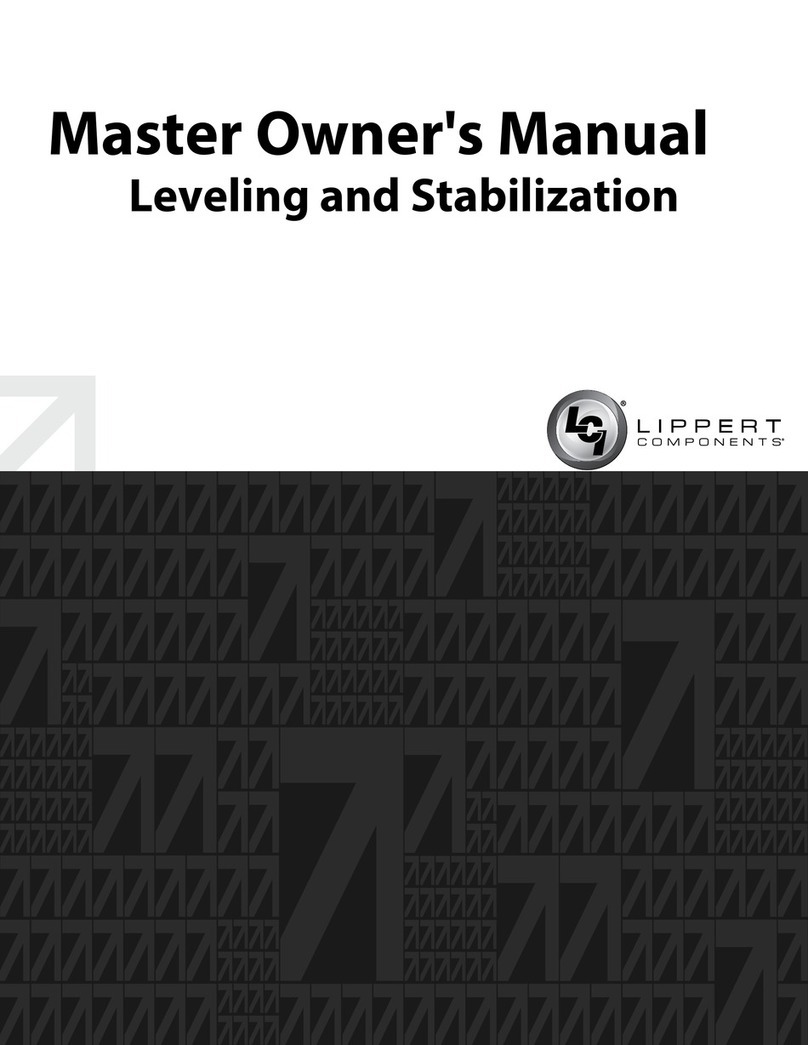Bigab 20-24 User manual

20-24
© 2005 Ver. 1 Fors MW Ltd www.forsmw.com 1
Table of contents
1. INTRODUCTION .................................................................................................2
1.1. PURPOSE......................................................................................................2
1.2. TECHNICAL SPECIFICATIONS................................................................3
1.3. DESIGN OF THE DEVICE ..........................................................................4
1.4. MAIN MODULES.........................................................................................5
1.5. SAFETY DEVICES.....................................................................................13
2. INSTALLATION ................................................................................................20
2.1. UNPACKING..............................................................................................20
2.2. ADJUSTMENTS.........................................................................................20
2.3. WITHDRAWAL FROM USE AND STORAGE........................................20
3. FUNCTIONAL DESCRIPTION.........................................................................21
3.1. HANDLING IN ROLL ON – ROLL OFF ..................................................21
3.2. HANDLING IN TIPPING...........................................................................23
3.3. OPERATION WHEN DRIVING................................................................24
3.4. CHANGING OPERATING FUNCTION ...................................................25
3.5. ELECTRICAL SYSTEM ............................................................................26
3.6. HYDRAULIC SYSTEM.............................................................................28
4. SAFETY INSTRUCTIONS.................................................................................30
4.1. GENERAL...................................................................................................30
4.2. WORKING AT EXTREME CONDITIONS...............................................32
4.3. ACTING IN DANGEROUS SITUATION .................................................32
5. MAINTENANCE / SPARE PARTS ...................................................................34
5.1. MAINTENANCE SCHEDULE ..................................................................34
5.2. MAINTENANCE OPERATIONS ..............................................................35
5.3. SPARE PARTS............................................................................................40
6. TROUBLESHOOTING.......................................................................................51
Factory:
CONTACT INFORMATION:
AS FORS MW
Tule 30
765 05 Saue
Estonia
Tel: + 372 679 00 00
Fax: + 372 679 00 01
E – mail: [email protected]
Aftermarket:
Language spoken is English and Swedish.
FMW Farma Norden AB
Hornsväg 2
605 97 Norrköping
Sweden
Tel: + 46 (0) 165 770
Fax: + 46 (0) 128 370
E – mail: afterm[email protected]

20-24
© 2005 Ver. 1 Fors MW Ltd www.forsmw.com
2
1. INTRODUCTION
1.1. PURPOSE
Bigab hook lift trailer exists in 9 different types of modules with a variety of
additional extras which all has it’s own purpose but with the same unique flexibility.
The flexibility lays in its ability to handle different kinds of loads on one and the same
chassed. This allows the Bigab to be used at a wide range of different user
applications.
Bigab 20 – 24 is the largest trailer within our assortment. Simple, impressive
and powerful are expressions that all suit the Bigab 20 – 24. This is a trailer for those
in need of extra heavy transportation.
For your safety, it is extremely important that you follow the instructions
presented in this instruction manual for your particular BIGAB model.
The unique flexible system gives operators the most cost effective and flexible
transport system available. Behind the Bigab trailers lays more then forty year of
knowledge and 25 years of product development.
We understand that you are anxious to get to work the trailer, but stop for a bit
and take time to carefully read through this instruction book. The Bigab trailer is
unique which also if not used properly could turn out to be dangerous. A few
moments reading through the instruction book might save you time and money in the
future. We congratulate you at your chose of trailer and wish you and your Bigab all
the best for the future!
EU declaration of conformity with Directive 2006/42 EC

20-24
© 2005 Ver. 1 Fors MW Ltd www.forsmw.com
3
1.2. TECHNICAL SPECIFICATIONS
Technical specifications.
Table 1.
Hooklift trailer 20-24
Frame:Hollow sections 300*100
Bogie:Pendulum Axel distance 1470 mm
Hubs: 110*110, 10 bolts
Wheels: 600/50-22,5
Brake: Hydraulic drum *Depending on market 400*120 on 4 wheels
Towing eyelet: Type for hitch hook
Support leg: Manual yes
Light system:12 volt yes
Tractor hydraulic: *For brakes 3 double, *1 single action
Oil volume: With system filled 23 L
Oil volume cylinders: Press 89 L, draw 66 L
Oil flow: 60 – 120 L/min
Hydraulic pressure: 22 Mpa
Tipp angle: 50 degrees
Chassi weight (±1%): Standard equipped 4300 kg
Chassi length (±50mm): 7925 mm
Distance eyelet to centred bogie (±20mm): 6270 mm
Distance eyelet to ground surface: 475
Height at skid surface: 1240 mm excluding the hook frame
Wide over tyres (±30mm): 2660 mm
Container length: 5500-6500 mm
Total weight (±1%): 24300 kg
Max load including container (±1%): 20000 kg
Max hooking load including container (±1%): 20000kg
Pressure on eyelet: depending of lenght of container and load 2500 –4500 kg
Max speed: 40 km/h

20-24
© 2005 Ver. 1 Fors MW Ltd www.forsmw.com
4
1.3. DESIGN OF THE DEVICE
The Trailer is constructed out of cold hollow steel sections. Through this
construction the trailer receives maximum endurance and stiffness regarding both
bending as well as twisting. The trailer is steady both in the tip as well as in the
changing movement. The trailer is equipped with a strong pendulum bogie that has
been equipped with brakes on all wheels.
Figure 1. Design of the device
Chassis
Hook
Wheels
Back frame
Hook frame
Rollers
Support leg
Towing eyelet
Roll on – roll off position
Tipping position
Telescope

20-24
© 2005 Ver. 1 Fors MW Ltd www.forsmw.com
5
1.4. MAIN MODULES
The trailer consists of the following subassemblies and functional devices.
1.4.1. Chassis
Chassis is constructed out of cold hollow steel sections. It exists in two
different variants. Chassis for Bigab with bogie block system (figure 2a) and chassis
for Bigab with frame block system (figure 2b).
Figure 2a. Chassis with bogie block system
Figure 2b. Chassis with frame locking system
Rear beam
Bracket for bogie block cylinder
Bogie axle brackets
Bracket for bogie lift cylinder
Guide
Towing eyelet
Coupling
hitch
Brackets for frame locking
system

20-24
© 2005 Ver. 1 Fors MW Ltd www.forsmw.com
6
1.4.2. Back frame
Back frame is constructed out of cold hollow steel sections
Figure 3. Back frame
1.4.3. Hook frame
The hooking frame with hydraulic telescope cylinder is constructed from sheet
metal.
Figure 4. Hooking frame
Hook
Frame
Frame
Telescope
Stroke 1300 mm
Hydraulic cylinder (inside)

20-24
© 2005 Ver. 1 Fors MW Ltd www.forsmw.com
7
1.4.4. Bogie
The Trailer is equipped with a strong pendulum bogie that has been equipped
with brakes on all wheels.
Figure 5. Bogie
1.4.5. Hook
The Trailer is equipped with adjustable hook for two different standard
heights.
Standard height: 1450 mm
Standard height: 1570 mm
Figure 6. Hook
Brake cylinder
Axle with brake
Body

20-24
© 2005 Ver. 1 Fors MW Ltd www.forsmw.com
8
1.4.6. Support leg
Support leg is designed to be of supporting use when the trailer is under
maintenance or when trailer is not in use. Before driving the support leg must be lifted
up and fixed with the pin. Also available is adjustable support leg as additional
equipment.
Figure 7. Support leg
1.4.7. Changing operation unit
This unit is designed for changing operation from rolling on - rolling off to
tipping. The changing unit is located in the middle of the back frame.
Figure 8. Changing operation unit
Hydraulic cylinder
Sliding pin
Back frame
Support leg
Pin
Chassis

20-24
© 2005 Ver. 1 Fors MW Ltd www.forsmw.com
9
1.4.8. Towing eyelet
The eyelet is used to hitch the trailer to the pulling vehicle. It is extremely
important that the towing eyelet is checked for defaults every time the trailer is used.
The towing eyelet needs to be replaced at least once a year. It is the users
responsibility to see to that this is done.
Figure 9. Towing eyelet
1.4.9. Coupling hitch
The coupling hitch is used for coupling other trailed devices to the trailer.
Coupling hitch is also used for coupling reflector.
Figure 10. Reflector Figure 11. Coupling
hitch
Rear beam
Pin
NB! Max load 10 ton
Chassis
Towing eyelet

20-24
© 2005 Ver. 1 Fors MW Ltd www.forsmw.com
10
1.4.10. Steering rollers
The steering rollers are designed to guide the container. During handling roll
on – roll off the container frame must be inside the rollers.
Figure 12. Steering rollers
1.4.11. Bogie block
The hydraulic bogie block is used for bogie blocking during the handling of
roll on – roll off.
Figure 13. Bogie block
Pin
Chassis
Bogie block hydraulical
cylinder
Steering
roller
Steering roller
Chassis

20-24
© 2005 Ver. 1 Fors MW Ltd www.forsmw.com
11
1.4.12. Frame locking
The hydraulic frame locking is used for frame blocking during the handling of
roll on – roll off.
Figure 14. Frame lock
1.4.13. Wheels
Wheels
Table 2.
Trailer type
Standard wheel type
Alternative wheel
type
Air pressure
(bar)
Speed
(km/h)
20-24
600/50-22,5
3,6
40
600/55-26,5
3,2
40
700/50-26.5
2,8
40
445/65R-22.5
5-10
40
* The air pressure might be different between different wheel manufacturers. For exact air
pressure we recommend taking contact with the wheel manufacturer.
Frame lock hydraulical
cylinder
Chain to the tractor

20-24
© 2005 Ver. 1 Fors MW Ltd www.forsmw.com
12
1.4.14. Hydraulic system
The trailer is equipped with a hydraulic system for working movements. See
chapter 3.5
1.4.15. Electrical system
The trailer is manufactured with 12V electrical system. See chapter 3.4
1.4.16. Brake system
The trailer is equipped with hydraulic brake system. Also is available
pneumatic brake system as an additional extra.

20-24
© 2005 Ver. 1 Fors MW Ltd www.forsmw.com
13
1.5. SAFETY DEVICES
1.5.1. Security post
Always use the safety support when carrying out service work in the tipped position.
The safety support may not be used under any circumstances when the container
bridge is loaded.
Figure 15. Security post
1.5.2. Locations of decals on the trailer
The trailer is equipped with a range of signs relating both to safety and information.
Check that all the signs are in the correct positions.
Figure 16. Location of the decals on the trailer
Security post
Chassis

20-24
© 2005 Ver. 1 Fors MW Ltd www.forsmw.com
14
1.5.3. Presentation of decals
Figure 17. Warning triangle and instruction manual decal.
The trailer is supplied with a warning triangle alongside the instruction manual
decal in order to reinforce the requirement for the user to read the entire
instruction manual carefully before starting to use the trailer. Ignoring this can
entail a danger to life.
Figure 18. Decal for the use of safety equipment.
These decals challenge the user to employ appropriate safety equipment in
order to avoid injury when using the trailer.
Figure 19. Risk of clamping injuries
There is a risk of clamping or crushing injuries during work and maintenance.
Figure 20. Hazardous area
Standing between the trailer and the towing vehicle when the trailer is being
operated, moved with frame steering or when other functions are activated
between trailer and tractor, can be potentially fatal. As the driver, you must
always ensure that the area around the machine is free of people.

20-24
© 2005 Ver. 1 Fors MW Ltd www.forsmw.com
15
Figure 21. Risk of slipping
There is a risk of slipping as the surfaces of the trailer can be slippery due to
precipitation in combination with pre-existing oil and/or clay on the surface.
The ground around the trailer can also become slippery, as the tyres can tear
up the surface and expose clay and soil.
Figure 22. Hydraulic fluid under pressure
Hot hydraulic fluid at high pressure levels can occur in the hydraulic system.
Take care when connecting, and replace poor quality hoses.
Figure 23. Using the exchange unit
The exchange unit may not be operated unless the frame is folded down.
During transport with the trailer, the hook must be folded down in the parking
position.

20-24
© 2005 Ver. 1 Fors MW Ltd www.forsmw.com
16
Figure 24. Use the safety support during all service
Leaning under the raised frame is absolutely prohibited unless it is
blocked with the safety support. Under no circumstances may the
trailer be carrying either a load or a container when using the safety
support.
Figure 25. Max. load
It is absolutely prohibited to load more than the amount your model is
intended to handle. This can result in danger to you and your
surroundings.
Figure 26. Max. pressure on towing eyelet
Ensure that you do not load in such a way that the pressure on the
towing eyelet exceeds the permitted laws and regulations. The
trailer is designed for a maximum pressure of 3,500 kg on the
towing eyelet. The pressure is largely determined by the way the
load is distributed on the container bridge, and it is the user’s
responsibility to ensure that this is not exceeded.

20-24
© 2005 Ver. 1 Fors MW Ltd www.forsmw.com
17
Figure 27. Tyre inspection
The tyres must be tightened and the brakes checked regularly at a
minimum interval of 40–50 kilometres.
Figure 28. Lubrication.
This decal is used to show the importance of regular lubrication of the
trailer.
Figure 29. Data plate

20-24
© 2005 Ver. 1 Fors MW Ltd www.forsmw.com
18
Nut tightening torque
Table 3.
Nuts with spherical
collar,conical nuts.
Screws with
spherical collar.
Thread
Dished discs
Flat discs st 37
Flat discs St52
Screw Class.
8.8
Screw Class.
10.9
N.m.
M18x1,5
310
330
460
M20x1,5
-
490
630
M22x1,5
-
630
740
Flat collar nut with
lock washer
M18x1,5
210
270
360
M20x1,5
-
360
450
M22x1,5
-
460
550
Nut with flat seat
captive washer
M18x1,5
260
360
M20x1,5
350
500
M22x1,5
450
650
Screwed connection
disc/rim on track
adjustable wheels
Thread
Flat discs
Screw Class. 8.8
M18x1,5
260-330
Figure 30. Lubricate points.
All of the hydraulic hoses of the trailer are marked with colored labels. See
table below for more detailed information. Functions depend of the hydraulic system
configuration.
Figure 31. Hydraulic hose label (example tipping cylinder)

20-24
© 2005 Ver. 1 Fors MW Ltd www.forsmw.com
19
Hose label colors:
•Red - oil from pump.
•Blue - oil to tank.
•Yellow - Brake
Marking for hydraulic hoses
Table 4.
No.
Color mark
Function
1
Yellow
Brake
10
Red
Tipping cyl. ( up )
11
Blue
Tipping cyl. ( down )
12
Red
Tower ( front )
13
Blue
Tower ( back )
14
Red
Telescope ( in )
15
Blue
Telescope ( out )
16
Red
Frame-lock for tipping
17
Blue
Frame-lock for hooking
18
Red
Bogie-block ( on )
19
Blue
Bogie-block ( off )
20
Red
Bogie-lift ( on )
21
Blue
Bogie-lift ( off )
22
Red
Extra port ( a )
23
Blue
Extra port ( b )
24
Red
Rear tailgate ( a )
25
Blue
Rear tailgate ( b )
26
Red
Steering control ( p )
27
Blue
Steering control ( t )
28
Blue
Straight steering control (t)

20-24
© 2005 Ver. 1 Fors MW Ltd www.forsmw.com
20
2. INSTALLATION
2.1. UNPACKING
Before unpacking, check visually that the trailer is not damaged during
transportation. If the trailer is damaged, inform about this to the company that
transported the trailer and the manufacturer of the product immediately.
•Usage of the trailer is strictly forbidden if safety devices of the trailer are
damaged. For more detailed information about safety devices see 1.5
•When you are unpacking the trailer be careful: do not damage sensitive
components, do not change factory settings or damage paint or other
surface finishes.
•Lift up the trailer from transportation frame.
•Lower the trailer to the floor.
•Be careful when lifting so that cables, connectors or other components are
not damaged for instance between lift work and trailer frame.
•Weight depends of each type of trailer see technical information for data.
2.2. ADJUSTMENTS
Quick couplings are used in the operation of connecting the vehicle in use with
the trailer. These couplings serve to disconnect the hoses without their breakage
and to prevent loss of oil under accidental strain and pull.
2.3. WITHDRAWAL FROM USE AND STORAGE
•It is not allowed to store the trailer in a cold and/or damp environment for a
long period.
•All metal parts are recyclable and should when time comes be handed over to
a recycler.
This manual suits for next models
3
Table of contents
Other Bigab Lifting System manuals
Popular Lifting System manuals by other brands
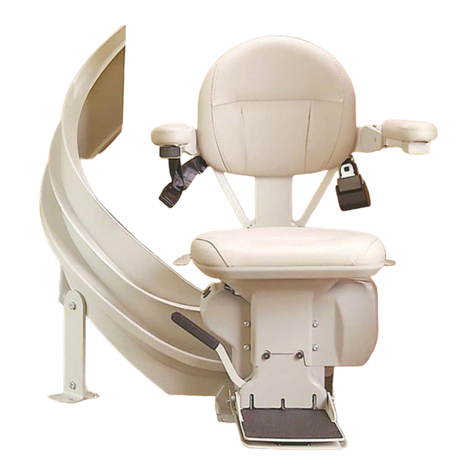
Bruno
Bruno CRE-2110 Operator's manual
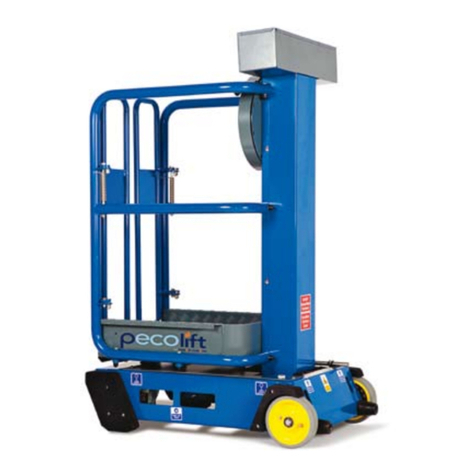
Power Towers
Power Towers pecolift Operating and maintenance manual

Oshkosh
Oshkosh JLG 400S Service and maintenance manual
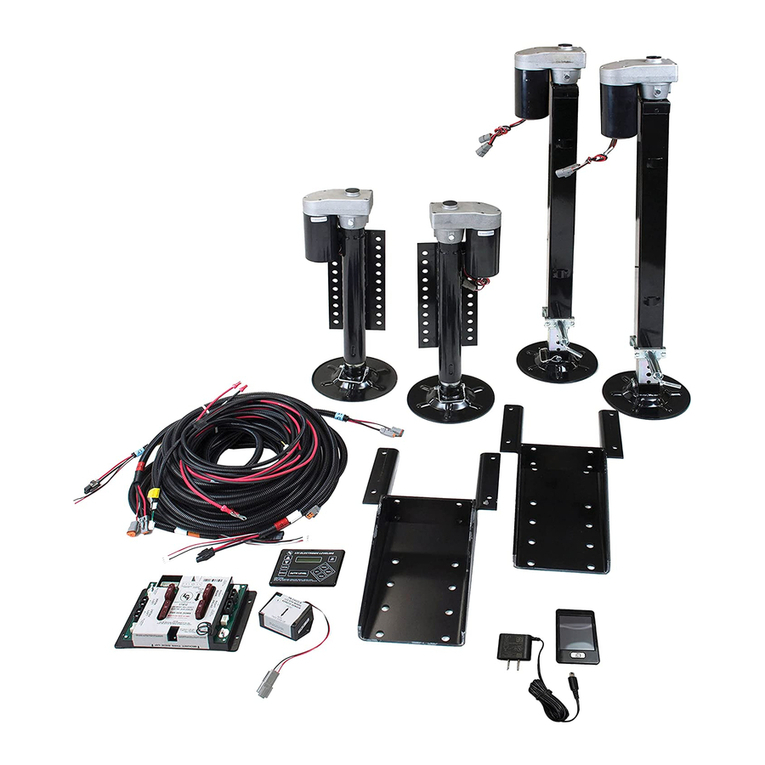
Lippert Components
Lippert Components ground control 3.0 user manual

WilTec
WilTec 61127 operating manual

RITE-HITE
RITE-HITE RHE-300 installation manual
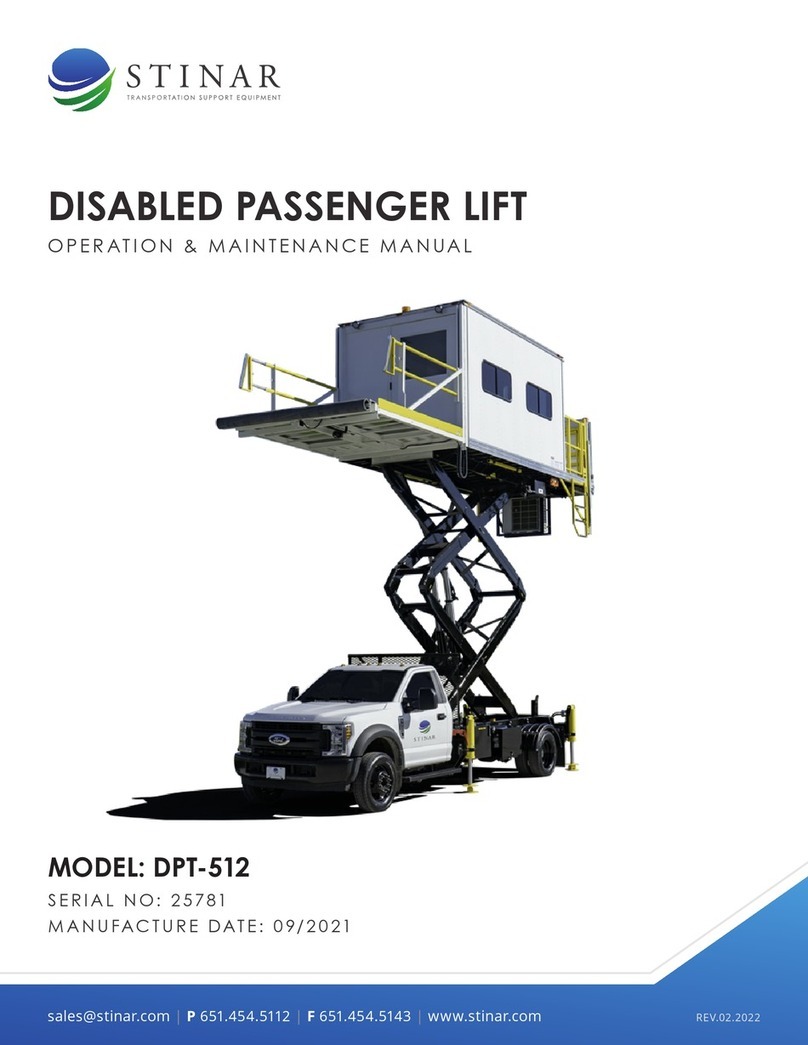
STINAR
STINAR DPT-512 Operation & maintenance manual
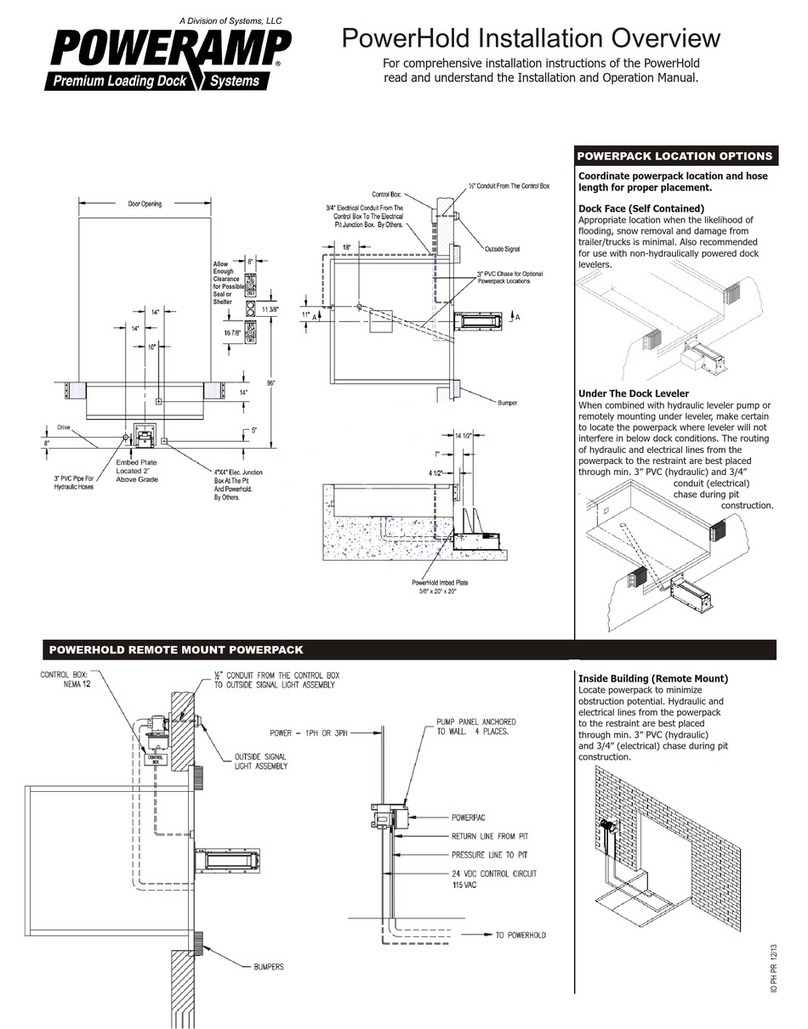
Poweramp
Poweramp PowerHold Installation overview

R. Beck Maschinenbau
R. Beck Maschinenbau HS 300 MIDI operating manual

Mec
Mec Speed Level 2684 RT Service and parts manual

Custom Equipment
Custom Equipment Hy-Brid Lifts 2 Series Maintenance and troubleshooting manual
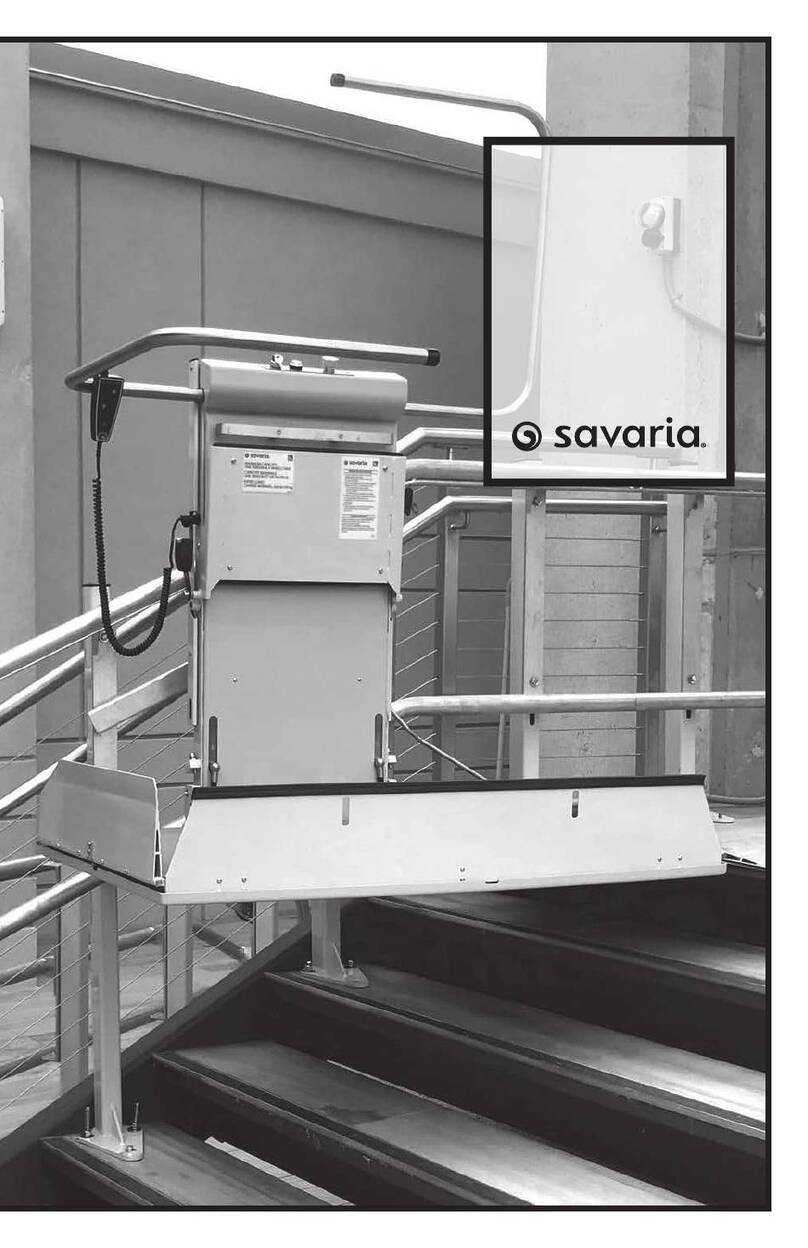
Savaria
Savaria omega owner's manual
